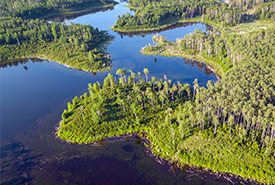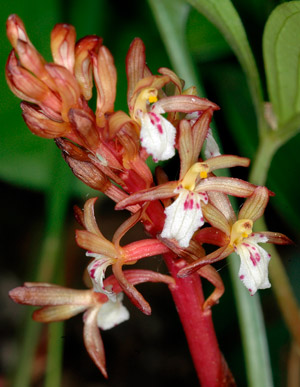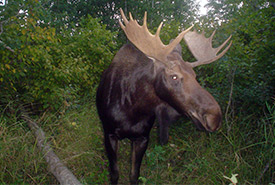A wetland wonderland now conserved
Moose Pasture contains incredible biodiversity
Moose Pasture, AB (Photo by NCC)
To celebrate World Wetlands Day, the Nature Conservancy of Canada (NCC) announced the conservation of Moose Pasture, a 65-hectare property located just east of Elk Island National Park in Alberta.
This project, achieved through a partnership with its owner, Heather Proctor, a University of Alberta biology professor, showcases the critical importance of wetlands in conserving biodiversity. Featuring a complex landscape composed of mature forests and wetlands, Moose Pasture is home to an incredible array of species — from tiny invertebrates to massive moose, for which the property is named.
Formalized protection
Proctor and her then partner bought the property as a way to ensure the future of its natural areas.

Spotted coralroot at Moose Pasture (Photo by Heather Proctor)
“In the early 2000s, I witnessed rapid development in the Edmonton area, with farmland and woodland disappearing before my eyes,” says Proctor. “Feeling a need to take action, I searched for ecologically important land to preserve.”
Proctor’s plan was to use the property as a bit of a getaway and a place to enjoy the biological diversity there, while keeping it intact. Now, almost 20 years later, she has decided to formally conserve the property through a conservation agreement in partnership with NCC — the value of which she donated entirely to the organization.
“I know that no matter what, it will still be protected, and that is a great feeling,” says Proctor.
Enjoying this story? Sign up for our newsletter!
Defying a name
The name “Moose Pasture” is a tongue-in-cheek reference to a once held misconception that wetlands are worthless.
“My previous husband loves noir novels, and in one of his favorite books, there was a scene where a scam artist talked about how he tricked people in the United States into buying a bunch of ‘moose pasture’ up in Canada,” says Proctor.

Moose at Moose Pasture (Photo by Heather Proctor)
While its name may be derived from a cheeky term implying the land's worthlessness, Moose Pasture staunchly defies this notion. "What makes it poor for farming makes it great for biological diversity and wetlands, with a rich tapestry of plant life," says Proctor.
A mite-y place
Proctor, who specializes in the study of minute arachnids known as mites, has used the property to study biodiversity both formally and for fun.
Some species of mites were newly described — meaning it was the first time they were ever documented by science — based on material collected at Moose Pasture. One of the species, Tectoribates alcescampestris, was even named after the property. In total, 195 species of mite have been documented here.
Mites are only one facet of the property’s biodiversity. Proctor teaches a course on freshwater invertebrate diversity, so is also drawn to the creatures that swim among its waters. She is also captivated by its aquatic plants, such as water arum and arrowhead.
Saving the Beaver Hills
Moose Pasture is an important conservation milestone in the Beaver Hills, a UNESCO Biosphere Reserve. Its intact habitats and proximity to conserved lands enhance the overall richness of the region.
"It's a fantastic place for species richness and being so close to Elk Island only enhances its ecological value," says Proctor.
Moose Pasture stands as a testament to the profound impact of wetland conservation, debunking stereotypes and unveiling an ecological treasure trove in the heart of the Beaver Hills — where much more conservation work remains to be done.




